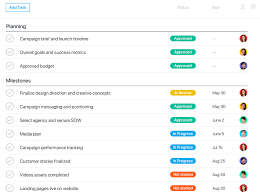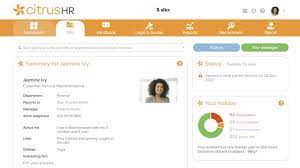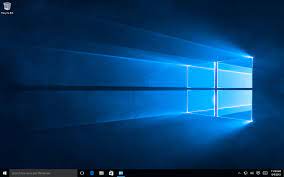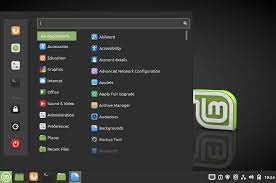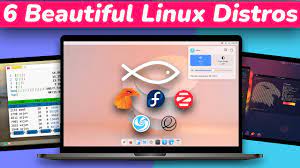Unveiling the Versatility of Manjaro OS: A Gateway to Arch-Based Linux Excellence
Exploring Manjaro OS: A User-Friendly Arch-Based Linux Distribution
Manjaro is a popular Linux distribution that is based on Arch Linux, known for its simplicity, stability, and user-friendliness. It aims to provide an accessible entry point for users interested in the power and flexibility of Arch Linux without the complex setup process.
One of the key features of Manjaro is its user-friendly approach to software installation and system maintenance. The distribution comes with the Pacman package manager, which allows users to easily install, update, and manage software packages with simple commands.
Manjaro also offers multiple desktop environments to cater to different user preferences, including Xfce, KDE Plasma, and GNOME. This flexibility allows users to customise their desktop environment according to their needs and preferences.
Another notable aspect of Manjaro is its focus on providing a stable system through careful testing of updates before they are released to users. This helps ensure that users have a reliable and secure computing experience without compromising on the latest features and improvements.
Furthermore, Manjaro provides access to the Arch User Repository (AUR), a community-driven repository that contains a vast selection of software packages not available in official repositories. This gives users access to a wide range of applications and tools to enhance their computing experience.
In conclusion, Manjaro OS offers a compelling combination of user-friendliness, stability, and flexibility for both beginners and advanced users alike. Whether you are looking for a reliable daily driver or a platform for experimentation and learning, Manjaro provides a solid foundation for your Linux journey.
Top 6 Advantages of Using Manjaro OS: A User-Friendly and Customisable Experience
- User-friendly interface for easy navigation and usage
- Stable system with carefully tested updates for reliability
- Access to a wide range of software through the Arch User Repository (AUR)
- Multiple desktop environments available for customisation
- Simple software installation and management with Pacman package manager
- Provides a gateway to the power and flexibility of Arch Linux without the complexity
Five Drawbacks of Using Manjaro OS: A Critical Overview
- Lesser official support compared to mainstream distributions like Ubuntu
- Occasional compatibility issues with certain hardware configurations
- Updates may sometimes introduce bugs or stability issues
- Limited availability of proprietary software in official repositories
- Steep learning curve for beginners unfamiliar with Arch-based systems
User-friendly interface for easy navigation and usage
Manjaro OS stands out for its user-friendly interface, designed to facilitate easy navigation and usage for all types of users. With intuitive menus, clear layout, and streamlined controls, Manjaro ensures a smooth and straightforward experience for both beginners and experienced users. The user-friendly design of the interface enhances productivity and efficiency, allowing users to focus on their tasks without being hindered by complex menus or confusing settings.
Stable system with carefully tested updates for reliability
Manjaro OS stands out for its commitment to providing a stable system with meticulously tested updates, ensuring reliability for users. By rigorously testing updates before release, Manjaro prioritises system stability, giving users the confidence that their operating system will consistently perform well without unexpected disruptions. This focus on reliability allows users to work and play with peace of mind, knowing that their system is robust and dependable.
Access to a wide range of software through the Arch User Repository (AUR)
One of the standout advantages of Manjaro OS is its access to a diverse array of software through the Arch User Repository (AUR). The AUR serves as a community-driven repository that expands the software offerings beyond what is available in official repositories. This vast selection allows users to easily discover and install a wide range of applications, tools, and utilities, catering to various needs and preferences. The AUR empowers users with the flexibility to explore and utilise an extensive library of software, enhancing their computing experience and enabling them to customise their system according to their specific requirements.
Multiple desktop environments available for customisation
Manjaro OS stands out for its versatility and user-centric approach by offering multiple desktop environments for customisation. Users have the freedom to choose from a variety of desktop environments, including Xfce, KDE Plasma, and GNOME, allowing them to tailor their computing experience to suit their preferences and workflow. This flexibility empowers users to create a personalised environment that enhances productivity and usability, making Manjaro an attractive choice for those seeking a tailored Linux experience.
Simple software installation and management with Pacman package manager
One of the standout advantages of Manjaro OS is its streamlined software installation and management process facilitated by the Pacman package manager. This intuitive tool empowers users to effortlessly install, update, and manage software packages with straightforward commands, making the overall system maintenance a hassle-free experience. By leveraging the Pacman package manager, Manjaro ensures that users can easily access and maintain a wide array of software applications, enhancing the efficiency and convenience of their computing experience.
Provides a gateway to the power and flexibility of Arch Linux without the complexity
Manjaro OS serves as a gateway to the robust capabilities and adaptability of Arch Linux, offering users a streamlined experience without the inherent complexities typically associated with Arch. By providing a user-friendly interface and simplified installation process, Manjaro enables individuals to harness the power and flexibility of Arch Linux’s architecture without requiring extensive technical expertise. This accessibility makes Manjaro an ideal choice for those seeking a balance between performance and ease of use in their Linux operating system.
Lesser official support compared to mainstream distributions like Ubuntu
One notable drawback of Manjaro OS is its relatively lower level of official support compared to mainstream distributions such as Ubuntu. While Manjaro has a dedicated community and forums where users can seek help and guidance, the lack of extensive official support channels may pose challenges for users who prefer direct assistance from the distribution developers. This limitation could potentially result in longer resolution times for technical issues or difficulties in accessing comprehensive documentation and resources, especially for less experienced users seeking reliable support options.
Occasional compatibility issues with certain hardware configurations
One potential drawback of Manjaro OS is the occasional compatibility issues that may arise with certain hardware configurations. While Manjaro strives to provide a seamless user experience, the diverse range of hardware components available in the market can sometimes lead to challenges in ensuring universal compatibility. Users with unique or less common hardware setups may encounter difficulties in getting all components to work optimally with the operating system. However, the Manjaro community is often proactive in addressing such issues through forums and support channels, offering guidance and solutions to help users overcome compatibility hurdles and make the most of their system.
Updates may sometimes introduce bugs or stability issues
One potential drawback of Manjaro OS is that updates, while intended to enhance the system, may occasionally introduce bugs or stability issues. Due to the rolling release model of Manjaro, where updates are continuously pushed out to users, there is a risk that some updates may not undergo thorough testing before being released. This can lead to instances where users experience unexpected issues or disruptions in system stability following an update. It is important for users to exercise caution and be prepared to troubleshoot or roll back updates if necessary to maintain a smooth and reliable computing experience with Manjaro OS.
Limited availability of proprietary software in official repositories
One drawback of Manjaro OS is the limited availability of proprietary software in its official repositories. Due to its focus on open-source principles, Manjaro may not include certain proprietary applications or drivers by default. This can be a limitation for users who rely on specific proprietary software for their work or personal needs, as they may need to seek alternative installation methods outside of the official repositories. While Manjaro provides access to the Arch User Repository (AUR) for additional software options, the absence of some proprietary applications in the official repositories could pose challenges for users who require such software for their daily tasks.
Steep learning curve for beginners unfamiliar with Arch-based systems
For beginners unfamiliar with Arch-based systems, one significant con of Manjaro OS is its steep learning curve. The intricacies of Arch Linux, upon which Manjaro is based, can pose a challenge for users who are new to the operating system. The need to understand concepts such as package management, system configurations, and terminal commands may require additional time and effort for those transitioning from more user-friendly distributions. This learning curve can be daunting for beginners seeking a straightforward and intuitive experience, potentially leading to frustration and a longer adjustment period when using Manjaro OS.







